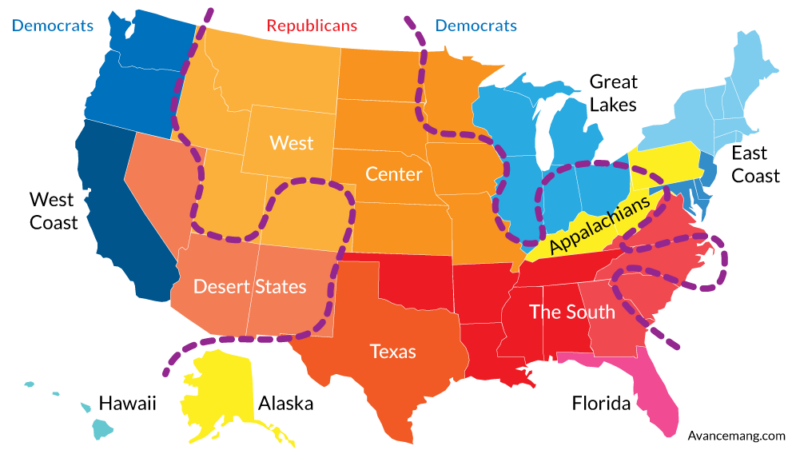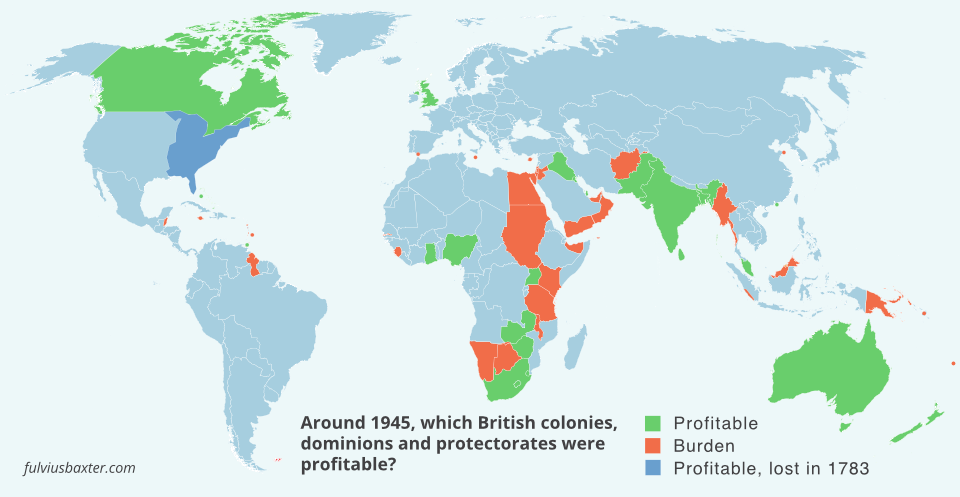I have discussed the concept of secession several times, it is about regions that break away from a state formation to become independent, or to join another state. Especially in light of the Ukraine conflict, where regions such as Crimea and Eastern Donbass sought autonomy or participation in the Russian Federation.
I thought I’d take a spin on the globe and focus instead on the US this time. A country that shows strong political polarisation. Where opinions and thoughts are so divergent that normal debates become increasingly difficult. And it’s not written in stone that the US is united forever. The young nation has already had a civil war, and it could happen again, or the states could separate in a more orderly fashion.
What, then, might a division of the United States look like?

I have divided the US into its cultural regions, as well as with political divisions from the 2020 presidential election. Roughly simplified, we have three major regions, but the conservative core population in the middle and south, and progressive states on the west coast and northeast.
The centre is classic America with apple pie, baseball and small-town life. The West has some Mormons and born-again Christians making their mark. While the desert states are best known for their special scenery, casinos and atomic bomb testing.
The multicultural South can in turn be divided into an eastern and western part, as well as the coast. They often vote conservatively and cultivate a more traditional life.
Both the west and east coasts are more progressive and left-leaning. They also have the largest cities, as well as financial and political life.
The Lake District was long the industrial heartland of the US, now partly a problematic depopulation area, sometimes called the “rust belt”.
The Appalachian region is squeezed between the Lake District and the coast, and is also less prosperous and more isolated.
Texas, Florida, Hawaii and Alaska have been named separately because they are peculiar and differ somewhat. Texans already consider themselves a separate country. Florida is characterised by its tropical climate, with holidaymakers, amusement parks, and low taxes. Alaska is defined by its isolation and northern climate, while Hawaii is far from the mainland with its own local culture.
A division of the United States would follow the cultural boundaries, but also the political ones, which partly intersect.
One can ponder whether the East Coast and the Maritime Districts would define a new country, or instead seek union with Canada, which they border, and which partly shares the progressive agenda of higher taxes and more regulation. The West Coast also partly borders Canada to the north, but is more remote and perhaps not as obvious a candidate for union.
The centre, south and west have fewer residents, but a greater chance of agreeing on a state formation and policy, as conservatism and traditionalism are common denominators here.
Of course, the disintegration could continue, resulting in more than three countries. And then I think the cultural divides could be de facto borders. Where some individual states could even declare independence, like Texas.
One obvious issue in a future statehood would be the Central States’ access to the Pacific Ocean, which is blocked by the West Coast states. Or exactly where the northeastern border should be, since cultural and political boundaries do not follow each other at the Lake District and Appalachian Mountains. One could even imagine some states being divided into even smaller parts.
The only thing that could prevent such a secession is the mighty US army, whose purpose is not only to act as the world’s police force, but also to counter internal divisions. Of course, the military could also split, and then we would have a problem similar to that of the fall of the Soviet Union, how to distribute the huge reserve of atomic bombs. Which also points to the seriousness of such a division of the American empire.







